#spotify freemium
Explore tagged Tumblr posts
Text
Does anybody have the link to the free spotify premium mobile app thing? My subscription just ran out and I need music to calm down due to autism, and I cannot afford spotify premium.
1 note
·
View note
Text
Spotify released an update to crack down on freemium users . Smh
18 notes
·
View notes
Note
what VPN do you use and how do you pirate spotify?
okay so I use nordvpn (I just like it) but if you don't wanna pay, proton vpn is a good secondary—it's a freemium-based model, but the free version is just fine.
Next, I used this https://apkmody.io/apps/spotify-premium-mod-apk to pirate spotify premium.
You wanna uninstall spotify, and download this apk. It works exactly the same as spotify premium. It only works for androids, so ios users are kinda fucked
Hope this helps!
#the dog does 'what's good'#moots#mootie patooties#mooties#mutuals#asks#ssavinggrace#mine dearest niece thalia#pirating#spotify premium#yes yes I am paying for nordvpn#I wanna be a little legal
46 notes
·
View notes
Text
How Google Maps, Spotify, Shazam and More Work | WSJ Tech Behind
" How does Google Maps use satellites, GPS and more to get you from point A to point B? What is the tech that powers Spotify’s recommendation algorithm?
From the unique tech that works in seconds to power tap-to-pay to how Shazam identifies 23,000 songs each minute, WSJ explores the engineering and science of technology that catches our eye.
Chapters: 0:00 Google Maps 9:07 LED wristbands 14:30 Spotify’s algorithm 21:30 Tap-to-Pay 28:18 Noise-canceling headphones 34:33 MSG Sphere 41:30 Shazam
Tech Behind 'The Tech Behind' explores the amazing engineering, computing, science and algorithms that power our favorite tech."
#Tech #Algorithm #WSJ
Source: The Wall Street Journal
#mktmarketing4you #corporatestrategy #marketing #M4Y #lovemarketing #IPAM #ipammarketingschool #ContingencyPlanning #virtual #volunteering #project #Management #Economy #ConsumptionBehavior #BrandManagement #ProductManagement #Logistics #Lifecycle #Brand #Neuromarketing #McKinseyMatrix #Viralmarketing #Facebook #Marketingmetrics #icebergmodel #EdgarScheinsCultureModel #GuerrillaMarketing #STARMethod #7SFramework #gapanalysis #AIDAModel #SixLeadershipStyles #MintoPyramidPrinciple #StrategyDiamond #InternalRateofReturn #irr #BrandManagement #dripmodel #HoshinPlanning #XMatrix #backtobasics #BalancedScorecard #Product #ProductManagement #Logistics #Branding #freemium #businessmodel #business #4P #3C #BCG #SWOT #TOWS #EisenhowerMatrix #Study #marketingresearch #marketer #marketing manager #Painpoints #Pestel #ValueChain # VRIO #marketingmix
Thank you for following All about Marketing 4 You
youtube
4 notes
·
View notes
Note
I just saw the Spotify might change their royalties model and that it would hit indie artists hardest. Are you posting your music elsewhere? I follow you on Spotify but now I'm looking into other places for music and want to continue supporting your awesome music!!
<3 <3 <3 <3 <3 <3 <3 <3 <3 <3 <3 <3 <3 <3 <3

I love you and thanks for asking.
Except for a few covers that are limited by licensing restrictions, my stuff is on all major and some minor platforms (I do sometimes lag in putting things on Bandcamp because lazy). I'm not monetized on Soundcloud because that system is somewhat different and IIRC not as welcoming of truly small artists, so any of my tracks that you find there are either on my "just for fun" accounts or are someone's illegal reupload.
Reminder to the new folks: I'm Firjii everywhere but also started another artist pseudonym as Kathy Warnecke (which should also be on all the same platforms by now).
Tidal and Apple usually have the best royalty payout rates and Spotify is among the worst (but no platform has a guaranteed fixed rate). Youtube is all over the place but usually on the low end. Downloads always pay better than streams, but I know some people can't do this or prefer to continually support with streams over time instead of paying once.
I'm also gonna take a minute to FUCKING RANT explain things to the uninitiated since virtually all my listeners on tungles are freemium Spotify users. From what I understand, this change has been finalized and it's not speculation at this point.
The deal is they'll withhold royalties from a song in a given calendar year unless it's streamed at least 1,000 times ANNUALLY (not lifetime).
Although the change will only consider per-track stats (not social media-like numbers such as followers/listeners or a measurement of how established the artist's presence is), in practice, this will specifically demonetize small/niche artists and have little or no impact on medium and big names. It will also affect the payouts small artists get from distributors because many of those have their own minimum payout thresholds.
I need people to understand just how shitty this is.
Say you're a prolific creator or recorded some live shows from a tour and you released 150 tracks in a year. If each track only got streamed on Spotify 999 times that year, they're pretty much saying you'd get paid for.......yup, exactly zero Spotify streams, not the 149,850 you're otherwise owed. I have no idea if this will impact PRO (performance rights organization) payouts, but I refuse to believe it would be legal to also withhold that share of royalties.
In the Spotify world, 1k streams is a tiny achievement (and still translates to a very small payout, so the concern is: what's to stop them from raising that minimum even more in the future?). But especially when the hurdle is per song per year, this can be a tough goal for indie or specialty genre artists to reach or maintain, including me.
I have a long history of disliking Spotify in particular for many reasons, but I upload there because it's the only way some people will listen. I strongly encourage anyone who is able to use other platforms to explore their options.
I know a lot of folks are too broke to pay for music and Spotify is a notable example of a freemium option, but this change is so, so, SO bad for SO many artists.
#hey maybe I need to start a tag for my music industry rants lol#how about#music industry tomfuckery#yes good let's go with that#nerkierants
10 notes
·
View notes
Text
Legal Issues Facing Discord Music Bots: What You Need to Know
In the world of Discord, music bots have become a popular way to enhance the user experience by allowing server members to listen to music together in real-time. These bots can play songs from various streaming platforms like YouTube, Spotify, and SoundCloud, making them a central feature for many communities. However, the use of these music bots has not been without controversy, especially concerning legal issues surrounding copyright and intellectual property rights. In recent years, several high-profile music bots have been shut down due to legal pressures, raising important questions for both users and developers. This article delves into the legal challenges that Discord music bots face, the implications for users, and what the future may hold.
Background on Legal Challenges: Discord music bots like Groovy and Rythm were once among the most popular bots on the platform, boasting millions of active users. These bots allowed users to stream music from YouTube and other platforms directly into their Discord servers. However, their popularity also caught the attention of major record labels and streaming platforms, which led to a series of legal actions that culminated in the shutdown of these bots.
The Rise of Music Bots:
Music bots first gained traction as a fun and easy way to share music in group settings. Their ability to pull audio from platforms like YouTube made them a go-to choice for community servers.
Bots like Groovy and Rythm became ubiquitous, often installed on thousands of servers, offering features such as playlist creation, queue management, and high-quality streaming.
Legal Notices and Shutdowns:
In 2021, YouTube issued cease-and-desist letters to both Groovy and Rythm, citing violations of their terms of service. The main issue was that these bots were pulling audio from YouTube videos without proper licensing or permission.
Groovy was the first to shut down, followed by Rythm shortly after. These shutdowns sent shockwaves through the Discord community, as many servers relied on these bots for their music needs.
The legal notices highlighted the importance of adhering to copyright laws, even in seemingly informal settings like Discord servers.
Understanding Copyright Law:
Copyright law protects creators' rights over their original works, including music. When music is played publicly or shared, it generally requires a license from the copyright holder or a performing rights organization (PRO).
Platforms like YouTube and Spotify have agreements with PROs that allow them to stream music legally. However, when a bot extracts and plays this music on another platform (like Discord), it can violate these agreements if proper licensing is not obtained.
Current Legal Status of Music Bots: The shutdown of Groovy and Rythm was a wake-up call for both developers and users of Discord music bots. Since then, the legal landscape has become more complex, with new bots emerging that attempt to navigate these challenges while staying within legal boundaries.
Emergence of Legal-Compliant Bots:
After the shutdown of major bots, developers began to explore ways to create music bots that could operate legally. This has led to the emergence of bots like Hydra and Chip, which use APIs provided by streaming platforms to play music in a way that complies with copyright laws.
Some bots have adopted a freemium model, where basic features are free, but advanced features (like high-quality streaming or playlist management) require a paid subscription. The revenue from these subscriptions helps cover licensing fees.
Platform-Specific Bots:
Some music bots are now designed to work specifically with platforms that offer API access and licensing agreements. For example, bots that pull music from Spotify do so through Spotify's official API, which ensures that all music played is properly licensed.
These platform-specific bots often come with restrictions, such as requiring users to link their personal accounts or limiting the number of tracks that can be played from certain artists or albums.
Risks for Server Admins:
While newer bots strive to operate within legal limits, server admins must still be cautious. Using bots that do not comply with copyright laws can expose the server owner to legal risks, including potential fines or the shutdown of their server.
To mitigate these risks, server admins should only use bots that explicitly state their compliance with copyright laws and avoid using bots that scrape audio from platforms without permission.
What This Means for Users: For the average Discord user, the legal issues surrounding music bots can be confusing. However, understanding these challenges is crucial for making informed decisions about which bots to use and how to use them responsibly.
Choosing the Right Bot:
Users should look for music bots that operate transparently and within legal boundaries. Bots that use official APIs from platforms like Spotify or YouTube are generally safer to use.
Avoid bots that offer suspiciously unlimited features for free, as these are more likely to be operating without proper licensing, putting both the bot and the server at risk.
Understanding Your Rights and Responsibilities:
When using a music bot, users are indirectly involved in the public performance of music. While this might seem trivial, it falls under the purview of copyright law.
Users should be aware that even if a bot is free to use, it doesn’t necessarily mean it’s legal. Always check the bot’s terms of service and any disclaimers provided by the developers.
Potential Consequences:
Using illegal music bots can result in the bot being shut down, leading to the loss of playlists, queues, and other features. In some cases, Discord itself may take action against servers that consistently violate copyright laws.
It’s also possible that continued use of illegal bots could lead to broader legal action against server owners, especially if the server has a large following or generates revenue.
Future Legal Considerations: The legal landscape for Discord music bots is likely to continue evolving as both developers and copyright holders navigate the challenges of digital music distribution. Here are some potential future developments:
Stricter Enforcement by Platforms:
As streaming platforms like YouTube and Spotify continue to crack down on unauthorized use of their content, we may see even stricter enforcement measures. This could include more frequent shutdowns of non-compliant bots or legal actions against developers.
Platforms may also develop more robust tools for detecting and blocking unauthorized bots, making it harder for illegal bots to operate undetected.
Development of Licensing Solutions:
There is potential for the development of licensing solutions specifically for music bots. This could involve partnerships between Discord and major streaming platforms to offer legal, licensed music bot options.
Developers could also explore ways to integrate more direct licensing options, allowing server owners to pay for the rights to stream music legally within their communities.
AI and Music Bots:
As AI technology continues to advance, we may see the development of music bots that can create or curate music in real-time, reducing reliance on copyrighted material. AI-generated music could offer a legal alternative, though this raises its own set of legal and ethical questions.
AI could also be used to monitor and manage the use of copyrighted music, ensuring that bots remain compliant with licensing agreements in real-time.
Conclusion: The legal issues facing Discord music bots highlight the complexities of digital music distribution and the importance of respecting copyright laws. While bots like Groovy and Rythm brought joy to millions of users, their shutdowns underscored the need for compliance with legal frameworks. As new, legally compliant bots emerge, users and server admins must be vigilant in choosing and using these tools responsibly. By staying informed and adhering to legal guidelines, Discord communities can continue to enjoy the benefits of music bots without the risk of legal repercussions.
2 notes
·
View notes
Text
not right now kitten, daddy has to listen to his Spotify Freemium Shuffle Playlist and look at the wall
4 notes
·
View notes
Text
✔️DESIGN INNOVATION////////////WEEK 12////////////STRATEGIC BUSINESS TOOL
Instructions and Tasks
Ще бъдат разгледани съществуващите модели на бизнес модели и чрез анализа на различни примери от успешни бизнеси ще се разгледат стратегии за създаване на пробивни иновации. Ще се проучи значението на проектирането и тестването на бизнес модела. Трябва да може да: - се признават / потвърждават различни модели за бизнес модели; - се има ясно разбиране за това как да създаваме пробивни иновации чрез компонентите на бизнес модела; - се извършват тестове на хипотезата за бизнес модела.
youtube
Ще продължим да изследваме бизнес страна на една идея. Независимо дали имате творческа идея, винаги можете да планирате и създадете пробивна иновация, като „играете“ с градивните елементи на платното на бизнес модела. Чрез иновации поне в един от градивните елементи на платното е възможно да се осигури стойност чрез потенциално успешен бизнес.
Такъв е случаят с Amazon, който проби пазара, като промени само градивния елемент на каналите, който в традиционния бизнес модел обикновено се прави чрез магазин, където клиентите трябва да отидат, за да купят книги. Въпреки това, вместо да използва физически магазин като точка за взаимодействие, Amazon го замени с уебсайт, където клиентите могат да направят своите поръчки и книгите ще бъдат доставени директно до домовете им.
Друг пример е Tinder, приложение за онлайн запознанства, което обръща специално внимание на дизайна на продукта и представя една основна революционна промяна на бизнес модела в сравнение с другите съществуващи уебсайтове и приложения за онлайн запознанства. Tinder се насочи към същия точен клиентски сегмент, достигайки до тях чрез същите канали и извършвайки подобни дейности като техните бизнес конкуренти. Въпреки това, те направиха иновации главно в своето предложение за стойност, предлагайки много по-удобен за потребителя интерфейс с атрактивен дизайн, на пазар, където имиджът и дизайнът са от съществено значение.
Spotify е друг пример за компания, която създаде пробивна иновация чрез модифициране само на потоците от приходи в сравнение с традиционния бизнес модел, използван в музикалната индустрия. Вместо да продава албум с десет или повече песни, Spotify представи уебсайт и приложение за стрийминг на музика, където клиентите могат да имат достъп до огромен плейлист с различни песни и албуми, под бизнес модел, наречен Freemium, който сега може да бъде намерен в много други различни бизнеси. В бизнес модел Freemium клиентите могат да използват продукта или услугата безплатно, обикновено с реклама и по-малко функции, и да получат достъп до премиум версия срещу заплащане на такса или абонамент, който премахва рекламите и дава достъп до специални функции.
Друг често срещан бизнес модел е многостранният модел, при който обединявате две отделни групи клиенти и където и двата сегмента са необходими за бизнеса. Примери за многостранни платформи са Google AdSense, където имате нужда от собствениците на уебсайтове и рекламодателите; iTunes, където е необходимо да има създатели на песни, както и слушатели на музика, или игрови конзоли като PSP, XBOX или Wii, където също са необходими две групи клиенти - а именно геймъри и разработчици на игри.
Друг често срещан модел е отвореният бизнес модел, при който можете да си сътрудничите или да предоставяте помощ на външни страни, докато служите като посредник между две страни. Един пример е платформата InnoCentive, където изследователи и иноватори могат да предложат решения на проблемите, които организациите няма или не могат да решат вътрешно.
Друг типичен модел на бизнес модел носи името Long Tail. Този модел се възползва от пазарни ниши, фокусиран�� върху продажбата на по-малко количества от по-голям брой специфични продукти. Когато работите за пазарна ниша, очевидно имате по-малък брой потенциални клиенти, което съответно води до по-малък брой продажби. Следователно в тези случаи е необходимо да има по-голям брой продукти или услуги, за да се гарантира жизнеспособността на бизнеса. Един бизнес, който използва този вид бизнес модел, е Lulu.com, където всеки може да публикува книги и електронни книги. Тази платформа се използва главно от по-малко известни автори, които работят за пазарни ниши и вече могат да публикуват произведенията си безплатно, основно защото отпечатването се извършва само след поръчване на книга. Едно голямо предимство на продажбата за пазарни ниши е фактът, че вашата аудитория е по-лесна за насочване, така че можете да изберете комуникационен канал, в който има по-голям шанс да достигнете до вашия клиентски сегмент. Независимо дали използвате вдъхновението на един от тези модели на бизнес модели или нарушавате съществуващите бизнес модели чрез иновации в един или повече градивни елементи, всяко решение засега е само хипотеза. Това означава, че след проектирането на всеки бизнес модел трябва да го тествате, за да проверите верността на всяка хипотеза.
Могат да се използват различни видове техники за извършване на всеки от необходимите тестове. Можете например да проведете няколко интервюта с потенциални клиенти, за да оцените тяхното удовлетворение по отношение на предложението за стойност, и чрез бърз и евтин прототип само с основните характеристики на вашия продукт можете да получите представа за процента на реализация между заинтересованите клиенти и бъдещи клиенти. Въпреки това е от съществено значение да се изследват и тестват различни възможности за бизнес модела, както е посочено от Тим О’Райли – бизнесмен, известен с това, че е популяризирал термините отворени иновации и Web 2.0; кой каза:
„Няма нито един бизнес модел, нито един вид електронно съдържание. Наистина има много възможности и много опции и ние просто трябва да ги открием всички“. Моля, изгледайте видеоклипа за тестване на бизнес модел и създайте тест, за да потвърдите поне една хипотеза, направена във вашия бизнес модел (изберете една от хипотезите, която изглежда по-критична за жизнеспособността на вашия бизнес план). След като съберете резултатите от теста, документира��те целия процес, като обясните как сте извършили теста, получените резултати, както и как предлагате да модифицирате или подобрите своя бизнес модел, съобразявайки се със заключенията, направени от резултатите от теста. Моля, споделете вашите резултати и с класа в дискусионния форум.
+ Osterwalder, A.; Pigneur, Y.. (2013). Business Model Generation. Hoboken, NJ: Wiley. [Book]
youtube
(!) Learning Activities Създайте тест, за да потвърдите поне една хипотеза, направена във вашия бизнес модел (изберете една от хипотезите, които изглеждат по-критични за жизнеспособността на вашия бизнес план). След като съберете резултатите от теста, документирайте целия процес, като обясните как сте извършили теста, получените резултати, както и как предлагате да модифицирате или подобрите своя бизнес модел, съобразявайки се със заключенията, направени от резултатите от теста. //////////// Design a test to validate, at least, one hypothesis made in your business model canvas (choose one of the hypotheses that seem to be more critical for the viability of your business plan). After collecting the test results, document the entire process, explaining how you performed the test, the obtained results, as well as, how do you suggest modifying or improving your business model attending to the conclusions drawn from the test results.
DONE :
PRODUCT : COVER AND SPREADS WITH ILLUSTRATIONS OF LEWIS CARROLL'S BOOKS FOR ALICE.
VALUE PREPOSITION FROM THE BUSINESS MODEL
Уникално отношение към потребителите на услугата / Unique treatment to service users
Подобрени резултати въз основа на опита / Improved results based on experience
Подобряване на услугата / Service improvement
За тестване верността на хипотезата за Value Preposition избрахме да проведем анкета с потенциални клиенти, която ще покаже тяхната оценката за удовлетвореността им от продукта. TARGET GROUP : тясна пазарна ниша от фенове на творчеството на Lewis Carroll. Избрахме да тестваме нашето предложение като зададем на евентуалните бъдещи потребители от две групи в социалните мрежи няколко въпроса свързани с оформлението на книгата. - Alice In Wonderland Inspired Photography, Movies and Art https://www.facebook.com/inspire1 - Alice in Wonderland and Through the Looking Glass https://www.facebook.com/alicewonderland.lookingglass
Изборът на таргет-групата има две предимства : - Това са социални групи, обединени тематично около книгите на Алиса. Последователите им са много добре запознати и с най-малките детайли от романите на Lewis Carroll и от тях може да се очаква да бъдат максимално критични по отношение на позитивите и негативите на нашето предложение за стойност. - Освен това от бъдещите потребителите би могло да се очаква да бъдат обективни в преценката си, тъй като в тези групи постоянно се публикуват различни визуализации (в това число и прототпи) инспирирани от темата за Алиса : фотографии, изящно изкуствво, илюстрации, Ai изкуство, кулинария.. и т.н. Тази широка база за стравнение дава възможност за обективна преценка на нашият продукт сред всички останали.
ДЕМОНСТРАЦИЯ НА ПРОТОТИП : Ще демонстрацираме прототип на нашия продукт в двете избрани фейсбук групи.
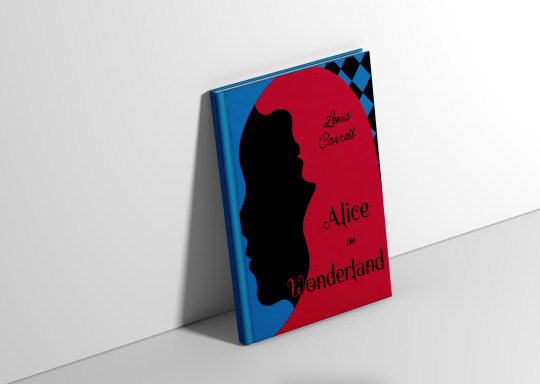
.
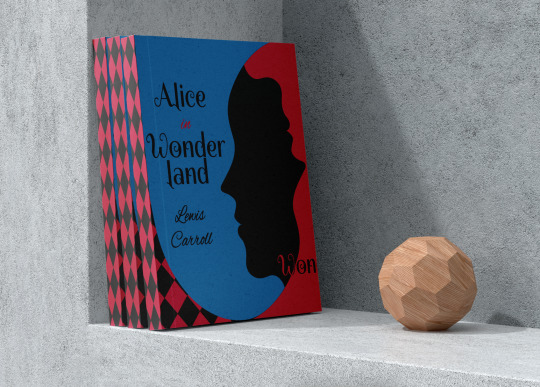
.

.
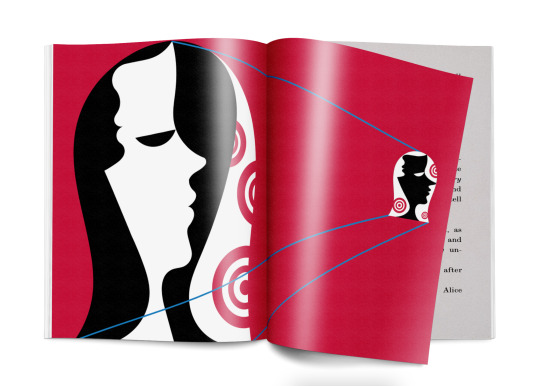
.
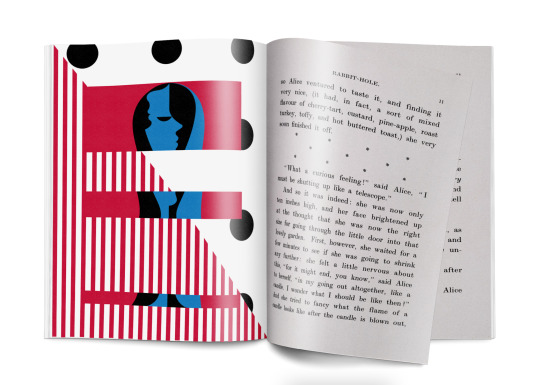
.

.
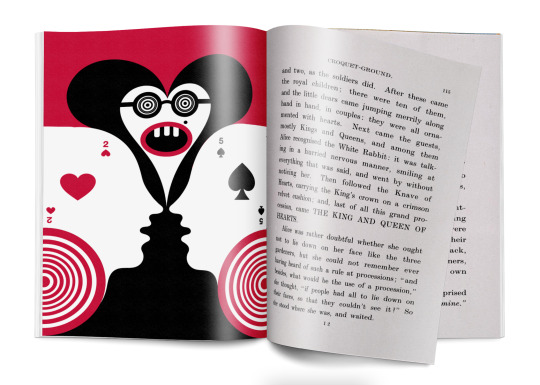
.
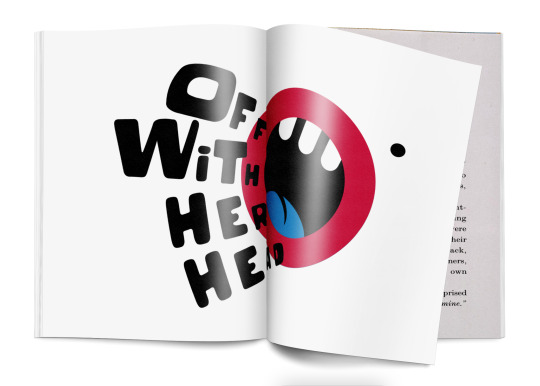
След като прегледат прототипите, ще зададем на потенциалните бъдещи потребители няколко въпроса свързани с оформлението на книгата.
ВЪПРОСИ :
1. Как за първи път разбрахте за нашия продукт? (отбележете с ✔ ) / How did you first find out about our product? (mark with ✔ ) - Случайно го забелязах на книжния пазар / I happened to notice it at the book market. - Препоръчаха ми го приятели / It was recommended to me by friends. - Току-що разбрах за това. / I'm just learning about it.
2. По скала от 1 до 5 (където 5 е най-високата и 1 е най-ниската) как ще оцените нашия продукт?/ On scale of 1-5 where 5 is the highest and 1 is the lowest how will you rate our product? - 5 - 4 - 3 - 2 - 1
3. Колко лесен е нашият продукт за намиране?(отбележете с ✔ ) /How easy is our product to finding? (mark with ✔ ) - Много лесно / Very easy - Сравнително лесно / Relatively easy - Не много лесно / Not very easy - Трудно / Not easy
4. Коя от посочените характеристики на нашият продукт е най-удовлетворяваща ?(отбележете с ✔, може и повече от 1 отговор) / Which of the following features of our product is the most satisfying ? (mark with ✔ /you may mark more than one answer) - корица / cover - шрифт / font - илюстрации / illustrations - цялостно оформление / overall layout
5. Каквa характеристика намирате за най-разочароващa в нашия продукт? (отбележете с ✔, може и повече от 1 отговор) / What do you find most frustrating about our product? (mark with ✔ /you may mark more than one answer) - корица / cover - шрифт / font - илюстрации / illustrations - цялостно оформление / overall layout
6. Какво харесвате най-много в нашия продукт?(отбележете с ✔, може и повече от 1 отговор) / What do you love most about our product? (mark with ✔ /you may mark more than one answer) - корица / cover - шрифт / font - илюстрации / illustrations - цялостно оформление / overall layout
7. Корицата предава ли ясно посланието ? (отбележете с ✔) / Does the cover convey the message clearly? (mark with ✔) - да / yes - не / no
8. Шрифта на корицата подходящ ли е ? (отбележете с ✔) / Is the font on the cover appropriate? (mark with ✔) - да / yes - не / no
9. Одобрявате ли избора на цветовата гама на илюстрациите (отбележете с ✔) / Do you approve of the choice of the colour range of the illustrations (mark with ✔) - да / yes - не / no
10. Как бихте оценили цялостното си преживяване с нашия продукт?(отбележете с ✔) / How would you rate your overall experience with our product? (mark with ✔) - превъзходно / Superb - много добро / Very good - добро / Good - задоволително / Satisfactory - незадоволително / Unsatisfactory
11. Как бихте оценили конкурентността на нашия продукт спрямо останалите на книжния пазар?(отбележете с ✔) / How would you rate the competitiveness of our product against others in the book market? (mark with ✔) - много надежден / Very reliable - не достатъчно надежден / Not reliable enough - ненадежден / Unreliable
12. Каква е вероятността да препоръчате нашия продукт на приятел или семейство? (отбележете с ✔) / How likely are you to recommend our product to a friend or family? (mark with ✔) - Ще го направя/ I will - Много вероятно / Highly likely - Не много вероятно / Probably not - Не бих го направил / I wouldn't do it
АНАЛИЗ НА РЕЗУЛТАТИТЕ :
Потребителите от двете групи във Facebook, в които бяха пубикувани прототипи на корицата и спредовете любезно отговориха на въпросите от анкетата.
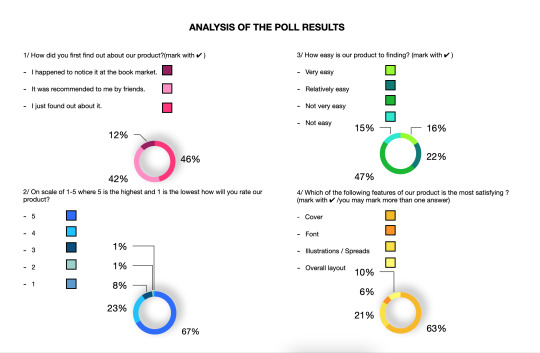
Анализирайки отговорите им, установявихме, че 1. 46% от тях току-що научават за нашият продукт. 42%са разбрали от приятели, и едва 12% случайно са открили продукта ни на книжната борса. Това ни дава сигнал, че рекламата на нашият продукт не е достатъчно добра и трябва да поработим върху нея. Един от начините е като организираме представяне на книгата с автографи и раздаване на колатерални продукти. 2. По отношение на оценката на потребителите на нашия продукт прави впечатление, че в по-голямата си част (67%) те му дават максимална оценка. Все пак има и не напълно удовлетворени потребители. Ще продължим да анализираме отговорите на следващите въпроси, за да установим защо е така и как да подобрим тяхното потребителско изживяване. 3. Тук преобладава мнението че нашият продукт е не е лесен за откриване(47%). Ще помислим за някакъв вид платена реклама в социалните мрежи, за да го популяризираме. 4. Говорейки за характеристиките на продукта се откроява корицата, която е оценена най-високо (63%), следвана от спредовете (21%), цялостното оформление (10%) и избора на шрифт, който е оценен най-ниско (6%). В някой от следващите етапи ще се опитане д го подобрим с декоратовно изработен шрифт за заглавието.

5. 67% от анкетираните смятат, че най-неудовлетворяващата характеристика от нашия продукт е изборът на шрифт, което съвпада до голяма степен с отговора на предишния въпрос. Действително, един оргинален, ръчно изработен шрифт в този случай би бил много по-докосващ потребителя, вместо софтуерните шрифтове, които са познати на аудиторията и могата да се асоциират с други продукти. 6. Най-голям процент от потребителите 65% считат, че цялостното оформление на продукта е това, което им харесва най-много, което всъщност е доста удовлетворяващо. 7. Друг удовлетворяващ момент е, че 92% от анкетираните считат, че корицата предава ясно посланието на текста. 8. Отново - не е изненадващо, че изборът на шрифт за корицата по-скоро не се приема от потребителите (75%)отколкото обратното, така че вероятно корицата ще се преработи.
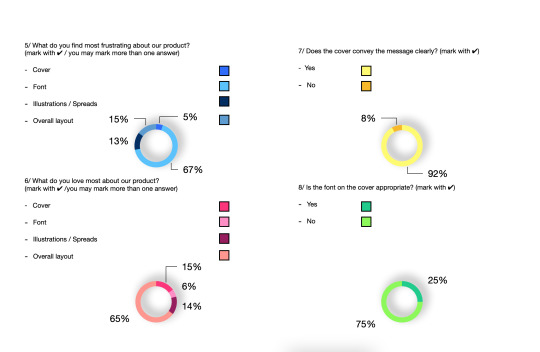
9. Участващите в анкетата по-скоро приемат избора на цветово решение за продукта (82%). 10. Много възнаграждаваща е оценката на потребителите за цялостното преживяване с нашият продукт. 45% го намират за много добро, като 17% посочват че е превъзходно. 11. Сравнен с останалите книги на борсата, нашият продукт също печели висока степен на доверие. 73% го намират за много надежден/конкурентноспособен, а 27% не достатъчно надежден или по-скоро ненадежден. 12. В резултат на всичко казано по-горе не е изненадващо, че продуктът ни със сигурност би бил препоръчан на познати от 69% от потребителите, а с голяма вероятноас от 21% от тях.
ЗАКЛЮЧЕНИЕ / CONCLUSION :
След като установихме степента им на удовлетвореност от нашето предложение за стойност и обобщихме резултатите ще се фокусираме върху неудовлетворителните моменти от потребитеското преживяване и възможността да ги избегнем за в бъдеще. / Having already established the degree of satisfaction with our value proposition and summarized the results, we will focus on the unsatisfactory moments of the user experience and the possibility to avoid them in the future.
3 notes
·
View notes
Text
The Evolution of Music Streaming in the 21st Century
The 21st century has been a transformative era for the music industry, marked by significant shifts in how music is consumed and monetized. Gone are the days of CDs and MP3 downloads dominating the market; streaming platforms now reign supreme. These platforms have revolutionized how we access, share, and discover music, creating new opportunities and challenges for artists and listeners alike. This article explores the journey of music streaming, its global impact, and the trends that continue to shape this dynamic landscape.
The Rise of Music Streaming Platforms
Music streaming started as a niche concept but quickly became mainstream, thanks to platforms that offer an extensive catalog of songs at users’ fingertips. Services like Spotify, Apple Music, and Amazon Music dominate the industry. Among these, understanding the biggest streaming platforms music provides valuable insights into their user base, unique offerings, and market dominance.
These platforms cater to diverse audiences by offering free ad-supported tiers and premium subscriptions. The freemium model has been instrumental in introducing millions to the convenience of streaming, while premium subscriptions ensure an uninterrupted listening experience.
The Impact of Streaming on Music Discovery
One of the most significant contributions of music streaming is its role in music discovery. Curated playlists, algorithm-driven recommendations, and user-generated content enable listeners to explore artists and genres they might not have encountered otherwise.
Social media platforms like TikTok amplify this discovery process. Viral challenges and trends often catapult lesser-known songs to global fame. For those curious about joining the discovery wave, learning how to find a song on TikTok can be a game-changer.
Affordable Access to Global Music
Streaming platforms have democratized access to music, but their pricing models vary significantly across countries. For example, the cheapest Spotify country offers premium plans at a fraction of the cost compared to other regions. This disparity highlights the efforts of streaming services to cater to diverse economic landscapes while expanding their global footprint.
By offering localized pricing, streaming services ensure that music lovers worldwide can enjoy premium features without financial strain. However, this model also sparks debates about fair compensation for artists.
Advertising and Monetization for Artists
For artists, music streaming is a double-edged sword. While platforms provide unprecedented reach, the revenue generated per stream is often criticized for being insufficient. To bridge this gap, many artists turn to advertising tools like Spotify Ad Studio login.
This platform allows artists and marketers to create targeted ad campaigns, ensuring their music reaches the right audience. With features such as demographic targeting and campaign analytics, Spotify Ad Studio is empowering artists to take control of their marketing strategies.
Spotlight on One-Name Artists
The rise of streaming has also spotlighted unique trends in artist branding. One example is the popularity of one name music artists. Names like Beyoncé, Adele, and Drake are instantly recognizable, thanks in part to the global reach of streaming platforms.
These artists have harnessed the power of a single, memorable name to build strong personal brands. Streaming platforms amplify their reach, ensuring that their music transcends borders and cultural barriers.
Challenges Facing the Streaming Industry
Despite its success, the music streaming industry faces several challenges. Artist compensation remains a contentious issue, with many musicians advocating for more equitable payment structures. Additionally, the reliance on algorithms for music recommendations has raised concerns about the homogenization of music tastes.
There’s also the question of data privacy, as streaming platforms collect vast amounts of user data to enhance recommendations and improve services. Balancing personalization with privacy is a critical challenge that these platforms must address to maintain user trust.
The Future of Music Streaming
Looking ahead, the music streaming industry is poised for further innovation. From integrating augmented reality (AR) and virtual reality (VR) experiences to exploring blockchain for fairer artist compensation, the possibilities are endless.
The growing popularity of live streaming concerts and virtual events is another trend to watch. These experiences offer fans an immersive way to connect with their favorite artists, all from the comfort of their homes.
Meanwhile, partnerships between streaming platforms and social media networks are likely to deepen, enabling more seamless music discovery and sharing. As platforms compete to deliver unique value propositions, listeners stand to benefit from richer, more personalized experiences.
Conclusion The evolution of music streaming in the 21st century has been nothing short of revolutionary. From increasing accessibility to transforming music discovery, streaming platforms have redefined the way we experience music. However, challenges such as fair artist compensation and data privacy need to be addressed to ensure a sustainable future for the industry.
Whether you're an artist looking to promote your music or a listener eager to explore new sounds, staying informed about these trends is essential. Streaming is here to stay, and its impact will only grow in the years to come. What are your thoughts on the evolution of music streaming? Share your perspective in the comments below!
0 notes
Text
A Deep Dive Into The Marketing Strategy of Spotify
Spotify, a global leader in the music streaming industry, owes much of its success to its innovative marketing strategies. From personalized playlists to partnerships with global brands, Spotify’s marketing tactics have set benchmarks for others to follow. In this article, we’ll explore the genius behind the Spotify marketing strategy and learn how companies like RDS Digital, a digital marketing company in Bangalore, can apply these insights to enhance their campaigns.
1. Personalization: The Heart of Spotify’s Success
One of the standout features of the Spotify marketing strategy is personalization. Spotify’s algorithm curates playlists such as Discover Weekly and Wrapped, tailored to users' listening habits. This approach not only keeps users engaged but also creates a sense of belonging.
Key Insight for Marketers: Personalization is key to customer retention. A digital marketing company in Bangalore like RDS Digital can leverage data analytics to create personalized campaigns that resonate with target audiences.
2. Data-Driven Marketing
Spotify’s use of data extends beyond playlists. Its humorous and relatable marketing campaigns, like "2018 Goals," are built on user behavior insights. By highlighting quirky user habits, Spotify connects with its audience on a personal level.
Key Insight for Marketers: Data-driven insights can fuel creativity. Agencies like RDS Digital, a leading digital marketing company in Bangalore, can utilize user data to craft campaigns that speak directly to consumers’ interests.
3. Collaborations and Partnerships
Spotify frequently collaborates with artists, influencers, and brands to amplify its reach. Campaigns like "Spotify Singles" and exclusive podcast deals ensure that the platform stays relevant.
Key Insight for Marketers: Strategic collaborations can enhance brand visibility. A digital marketing company in Bangalore can help businesses identify and collaborate with the right partners for maximum impact.
4. Social Media Savvy
Spotify’s presence on social media is dynamic and engaging. From trending memes to behind-the-scenes artist stories, Spotify keeps its audience entertained and informed. Their use of user-generated content further boosts engagement.
Key Insight for Marketers: Social media is a powerful tool for brand engagement. By emulating the Spotify marketing strategy, companies can create buzzworthy content. Partnering with RDS Digital ensures expertise in managing impactful social campaigns.
5. Freemium Model: Converting Users
Spotify’s freemium model has been a cornerstone of its marketing strategy. By offering free access with ads, Spotify attracts millions of users, many of whom eventually upgrade to premium subscriptions.
Key Insight for Marketers: Offering free trials or freemium services can be an effective way to build a customer base. A digital marketing company in Bangalore like RDS Digital can help implement and optimize such strategies.
6. Storytelling Through Wrapped
Spotify Wrapped is more than just a year-end summary; it’s a storytelling tool. By showcasing users’ listening habits in a visually appealing format, Spotify creates shareable content that users proudly post on social media.
Key Insight for Marketers: Storytelling fosters emotional connections. Companies can replicate this aspect of the Spotify marketing strategy to build a loyal customer base.
Why Spotify’s Strategy Stands Out
Spotify’s marketing strategy is successful because it:
Focuses on the user experience.
Leverages data for personalization and creativity.
Builds emotional connections through storytelling.
Adapts to changing trends and technologies.
How RDS Digital Can Help
As a premier digital marketing company in Bangalore, RDS Digital understands the importance of innovative strategies like those employed by Spotify. From personalized campaigns to data-driven insights, RDS Digital offers solutions that help brands stand out in a competitive market. Whether you’re looking to boost your social media presence or create compelling content, RDS Digital has the expertise to deliver.
Final Thoughts
The Spotify marketing strategy is a masterclass in innovation, creativity, and user-centric approaches. By understanding and applying these principles, businesses can achieve remarkable results. With the help of RDS Digital, a leading digital marketing company in Bangalore, you can craft strategies that resonate with your audience and drive success. Ready to elevate your marketing game? Contact RDS Digital today!
0 notes
Note
Freemium? Like when you listen on desktop?
When you have a modded client to listen to spotify without buying premium. The one i use for desktop is fine but mobile users are having a terrible one with the new update hiding all the songs
#asks#tbh if an app has to be constantly annoying to get people to buy shit its a sign for me to not do that and look for an alternative
5 notes
·
View notes
Text
How Social Media Meets Streaming: The VK Music Group Phenomenon
The world of music has undergone a seismic shift, blending with the realm of social media to create platforms that are more than just streaming services. One such platform that has successfully bridged this gap is VK Music Group. Popular in Eastern Europe and Russia, VK Music combines social networking and music streaming, giving users a unique, community-driven experience. This article delves into how platforms like VK Music Group are shaping the way we consume and share music, and the profound impact this fusion has on listeners and artists alike.
The Integration of Social Media and Music Streaming
The Emergence of Hybrid Platforms
While standalone streaming platforms such as Spotify revolutionized music consumption, hybrid platforms like VK Music have taken the concept further by combining social interaction with music. On VK Music, users can share their playlists, discuss tracks in groups, and discover songs their friends are listening to—all within a single interface.
This integration provides a richer experience than traditional streaming services. Users are not just consuming music; they are part of a community where they can engage in conversations, share opinions, and even collaborate on playlists.
A Community-Driven Experience
Unlike traditional music streaming platforms, VK Music Group allows fans and artists to connect directly. The social aspect encourages a sense of belonging, which is particularly appealing to younger audiences who crave interactive and immersive digital experiences. It’s this blend of personalization and community that sets VK apart in the crowded streaming market.
Advantages for Listeners and Artists
Listeners: A Curated, Social Experience
Listeners benefit from VK Music’s robust recommendation system, which is enhanced by social input. The ability to see what friends are listening to, join fan groups, or participate in discussions about new releases makes discovering new music more organic and fun.
Artists: Direct Access to Fans
For artists, platforms like VK Music open doors to direct fan engagement. They can interact with their audience, receive immediate feedback, and even crowdsource ideas for new projects. This direct connection fosters loyalty, helping artists build a dedicated fan base.
The Global Perspective
VK’s Role in the Global Music Scene
While VK Music is predominantly popular in Russia and surrounding regions, it has sparked interest worldwide due to its unique model. Platforms like Spotify Origin laid the foundation for global music streaming, but VK adds a layer of local relevance and social interaction, which is crucial for capturing niche audiences.
Localized Content is Key
The success of platforms like Wynk Music Plans in India highlights the importance of localized content. VK Music similarly offers an extensive library of regional music, appealing to diverse tastes and preferences, which ensures its widespread adoption in its target markets.
Challenges Facing Hybrid Platforms
Balancing Privacy and Engagement
As a social media-based platform, VK Music faces challenges related to user privacy. Balancing the open nature of social interaction with the need to protect personal data is a critical concern for any hybrid platform.
Competition in the Streaming Market
With global giants like Spotify and Apple Music dominating the scene, VK Music must continuously innovate to stay relevant. Leveraging its social media integration and local music library are key strategies for maintaining its competitive edge.
Monetization Strategies
Another challenge lies in monetizing its offerings without alienating users. VK Music employs a freemium model, similar to Spotify Origin, where users can access basic features for free but must pay for premium services. Striking the right balance between free and paid features is essential for retaining users while generating revenue.
The Future of Music-Driven Communities
A New Wave of Fan Engagement
As technology evolves, platforms like VK Music will likely pioneer even more innovative ways to engage fans. Live streaming, for instance, is an area with tremendous potential. DJs and artists can use platforms like DJ Twitch to broadcast live performances, engage with fans in real-time, and create unforgettable experiences.
Expanding Beyond Regional Markets
To grow beyond its core user base, VK Music will need to expand into other regions, tailoring its content and social features to suit local preferences. By learning from the success of services like Wynk Music Plans, VK can attract a broader audience while retaining its unique identity.
The Role of Artificial Intelligence
AI will play a significant role in the future of hybrid platforms. From personalized music recommendations to real-time moderation of user interactions, AI can enhance both the music and social aspects of VK Music.
Conclusion
The fusion of social media and music streaming is shaping the future of the industry, and platforms like VK Music Group are leading the way. By offering a community-driven experience that connects fans and artists, VK Music has carved out a niche in the competitive streaming market. While challenges remain, its innovative approach and focus on local content ensure its continued growth and relevance.
The future of music streaming is not just about listening—it’s about sharing, interacting, and building communities. What are your thoughts on the role of social media in music? Share your perspective in the comments below!
0 notes
Text
Case study Spotify | Spotify case study ux | Spotify case study 2019 | on Artificial Intelligence
"In this Video i have explained how Spotify remains top of the music streaming world ?
Source: 5 Minutes Learning
#Spotifycasestudyux#cassestudyspotify#5MinutesLearning#spotify#bigdata#music#dataanalytics#wync#airtelwync#onlinemusic#musicstreaming#recommendationsystem#uxdesign#uxdesigncasestudy#musicapp "
#mktmarketing4you#corporatestrategy#marketing#M4Y#lovemarketing#IPAM#ipammarketingschool#ContingencyPlanning#virtual#volunteering#project#Management#Economy#ConsumptionBehavior#BrandManagement #ProductManagement #Logistics #Lifecycle
#Brand #Neuromarketing #McKinseyMatrix #Viralmarketing #Facebook #Marketingmetrics #icebergmodel #EdgarScheinsCultureModel #GuerrillaMarketing #STARMethod #7SFramework #gapanalysis #AIDAModel #SixLeadershipStyles #MintoPyramidPrinciple #StrategyDiamond #InternalRateofReturn #irr #BrandManagement #dripmodel #HoshinPlanning #XMatrix #backtobasics #BalancedScorecard #Product #ProductManagement #Logistics #Branding #freemium #businessmodel #business #4P #3C #BCG #SWOT #TOWS #EisenhowerMatrix #Study #marketingresearch #marketer #marketing manager #Painpoints #Pestel #ValueChain # VRIO #marketingmix
youtube
3 notes
·
View notes
Text
Global Trends in Music Streaming and Their Local Impacts
The music industry has undergone a seismic transformation in the last two decades. The shift from CDs and downloads to music streaming services has reshaped how audiences consume music, how artists distribute their work, and how the industry generates revenue. This digital revolution has democratized music access, allowing fans across the globe to explore genres and artists they might never have encountered otherwise. From global streaming giants to regional players, the dynamics of the music world are changing rapidly. This article explores the global trends in music streaming and their impact on local markets, with insights into key players like who owns Spotify, innovative platforms such as those created by SoundCloud founders, and milestones like the Spotify launch date in India.
The Rise of Global Music Streaming Giants
In the early 2000s, music piracy threatened the very existence of the music industry. The introduction of legitimate streaming services brought a solution that not only curbed piracy but also offered convenience to users. Among these, Spotify emerged as a leader, thanks to its innovative subscription model and vast catalog. The question of who owns Spotify reveals an interesting business journey. Founded by Daniel Ek and Martin Lorentzon, Spotify pioneered the freemium model, combining ad-supported free tiers with premium subscriptions.
Other major players, such as Apple Music, Amazon Music, and YouTube Music, have followed suit, intensifying competition. These platforms are investing in exclusive content, AI-driven recommendations, and regional language catalogs to appeal to diverse user bases. This aggressive expansion has turned streaming services into cultural powerhouses, influencing how people discover and consume music worldwide.
The Democratization of Music Creation and Distribution
The advent of platforms like SoundCloud marked a new era for indie artists. SoundCloud founders, Alexander Ljung and Eric Wahlforss, created a platform that allowed creators to upload, share, and monetize their music without traditional gatekeepers like record labels. This model opened doors for thousands of aspiring artists who previously struggled to get their work noticed.
This shift has also impacted local music scenes, enabling regional artists to gain international recognition. From hip-hop to folk, genres that once had limited appeal outside their home countries are now being streamed by global audiences. For example, K-pop and Afrobeats have exploded in popularity due to platforms that encourage user-generated content and community interaction.
How Music Streaming Impacts Local Markets
The impact of music streaming services is particularly evident in local markets like India. The Spotify launch date in India on February 26, 2019, marked a significant moment for the country’s burgeoning digital economy. With its diverse culture and plethora of languages, India posed a unique challenge for global streaming platforms. Spotify's strategy included partnerships with local music labels, curated playlists for regional languages, and affordable subscription models to capture the Indian audience.
This localization approach has inspired other global platforms to tailor their services for regional audiences. As a result, Indian artists now have greater opportunities to reach global listeners, while consumers enjoy access to both international hits and local favorites.
Career Opportunities in the Streaming Era
The digital transformation of the music industry has also created a wealth of job opportunities. Careers in music now extend beyond traditional roles such as performers or composers. With the rise of digital platforms, there is a growing demand for roles in content curation, music data analysis, digital marketing, and more. Individuals passionate about music can explore diverse music jobs, including positions at streaming companies, artist management firms, and tech startups.
Streaming services themselves are also becoming major employers, offering jobs in areas like software development, AI engineering, and localization. For instance, curating playlists that resonate with different cultural demographics requires both technical expertise and cultural sensitivity, making it a dynamic field for job seekers.
The Role of Regional Players in Shaping Local Music
While global giants like Spotify dominate headlines, regional players play a crucial role in preserving and promoting local music. In India, regional music labels like Anand Audio have been instrumental in bringing Kannada music to the forefront. The Anand Audio owner has built a brand synonymous with high-quality regional content. Their focus on producing and distributing local music has not only preserved cultural heritage but also allowed them to thrive in the streaming era.
Regional labels often act as cultural custodians, ensuring that traditional and folk music isn't lost in the shuffle of mainstream pop. By embracing digital platforms, these companies can now reach audiences far beyond their geographical boundaries, contributing to a more diverse global music landscape.
The Challenges Ahead for the Music Industry
Despite its many successes, the music streaming industry faces several challenges. One significant issue is fair compensation for artists. While streaming platforms have made music more accessible, many artists argue that the royalty rates are insufficient. Striking a balance between affordable subscription fees for users and fair pay for creators remains a contentious issue.
Additionally, the reliance on algorithms for music discovery can lead to homogenization, where certain types of music get prioritized over others. This can disadvantage smaller, niche artists who may struggle to gain visibility. To address these concerns, platforms must continue to innovate and find ways to support all stakeholders in the music ecosystem.
The Future of Music Streaming
Looking ahead, the music streaming industry is likely to see even more innovation. With advancements in AI and machine learning, platforms will offer increasingly personalized listening experiences. Virtual reality (VR) and augmented reality (AR) technologies could bring concerts and music videos to life in entirely new ways, making the experience more immersive for fans.
As platforms expand globally, they will need to navigate complex cultural and regulatory landscapes. Collaborations with local artists and labels will be key to building trust and fostering growth in new markets. Regional players, such as the Anand Audio owner, will continue to play an essential role in this evolution, ensuring that local music traditions are not left behind in the race for global dominance.
Conclusion The rise of music streaming has forever changed the way we consume and interact with music. From global giants like Spotify to regional champions like Anand Audio, the industry is more dynamic and diverse than ever before. As technology continues to advance, the potential for innovation in this space is boundless.
The challenge for stakeholders will be to balance growth with sustainability, ensuring that artists, platforms, and fans alike benefit from this digital revolution. What do you think about the current state of music streaming? Share your thoughts in the comments below!
0 notes
Text
Understanding Business Revenue Models
In the dynamic world of entrepreneurship, understanding revenue models is a key pillar of building a successful business. Whether you’re an aspiring entrepreneur or a seasoned business owner, identifying the right revenue stream is crucial for growth and sustainability. A recent talk at the USTP Tech Hub explored the nuances of business revenue models, delving into the differences between social enterprises and non-social enterprises, alongside real-world examples. Here’s a breakdown of the discussion.
A revenue model outlines how a business generates income. It serves as the foundation for profitability and influences many strategic decisions, from marketing to operations. Common revenue models include, Subscription Models (e.g., Netflix, Spotify), Freemium Models (e.g., LinkedIn, Canva), Transactional Models (e.g., Amazon, Lazada)Each model fits different industries, products, and customer bases, underscoring the importance of tailoring it to your business’s unique value proposition.
Social enterprises blend the pursuit of profit with a commitment to addressing social, environmental, or cultural issues. They use a revenue-generating model to fund their mission, creating a sustainable impact. The revenue models in social enterprises are often structured around reinvestment into their mission, making them unique in their goals and operations.
In contrast, non-social enterprises prioritize profit generation and shareholder value. Their primary goal remains financial growth. Non-social enterprises thrive on scalability, customer loyalty, and market trends to maximize their revenues.
The choice of revenue model impacts everything from customer acquisition strategies to operational costs. Understanding these distinctions helps businesses align their goals with the right strategy for revenue generation.
0 notes
Text
Spotify: Revolutionizing How We Listen to Music
Spotify has transformed the music industry by providing listeners with instant access to millions of songs and podcasts. Founded in 2006 in Sweden, Spotify disrupted traditional music consumption by offering a streaming service that made physical media and downloads nearly obsolete. Its freemium model, which includes a free tier supported by ads and a premium subscription option, has attracted millions of users worldwide. Spotify has become synonymous with convenience, personalization, and access to diverse content. spotify streams kopen
One of Spotify's standout features is its advanced recommendation system. Using algorithms and user behavior, Spotify curates playlists such as "Discover Weekly" and "Release Radar," which introduce users to new artists and tracks tailored to their preferences. This ability to personalize music recommendations has made Spotify a favorite among music lovers, while its curated playlists like "Today's Top Hits" and "Lo-Fi Beats" cater to specific moods and occasions. For many, Spotify isn’t just a streaming platform; it’s a music discovery tool.
However, Spotify has faced criticism, particularly from artists and rights holders, regarding its royalty distribution. Many musicians argue that the per-stream payout is too low, sparking debates about fair compensation in the streaming era. Spotify has responded by introducing tools for artists to analyze their listener data and promote their music. While the debate continues, Spotify remains a critical platform for emerging artists to gain exposure and reach global audiences without needing traditional record labels.
Looking forward, Spotify continues to innovate, expanding its podcast library and exploring new audio formats. By acquiring podcasting companies and producing exclusive content, the platform has positioned itself as a leader in the audio streaming market. With its focus on user experience, technology, and content diversity, Spotify has cemented its place as a pioneer in digital music and audio entertainment, connecting people to the sounds they love anytime, anywhere. spotify plays kopen
0 notes